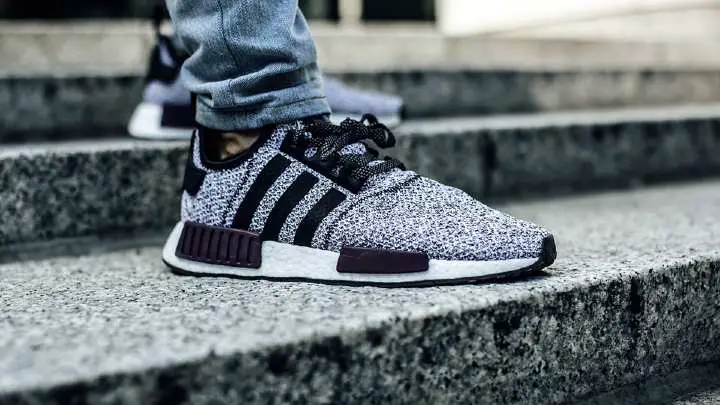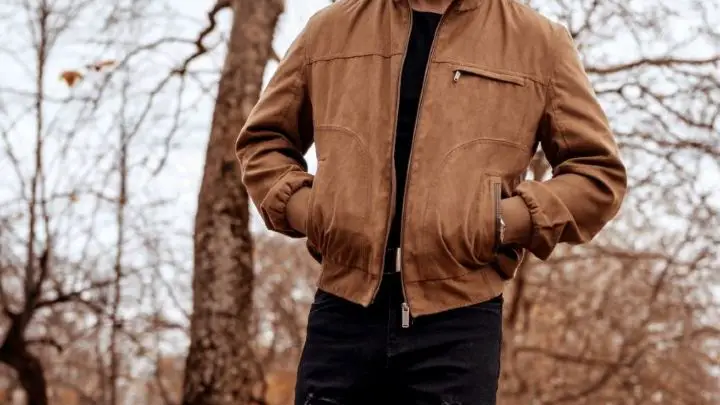You might ask, how does SPF work?
SPF works according to its number rating and active ingredients. SPF means Sun Protection Factor and it’s contained in beauty products. It measures the level of protection from the sun you get when using a product.
While there is nothing you can do to control the environmental temperature outside your home, you can protect your skin from getting burned with the help of an SPF product.
Summer is here and it’s time to put defenses up for your skin. How does SPF work on your skin and its application? Read on to find out.
SEE: Bursting the Myth – Is Sunscreen Good For Dark Skin Tones?
How does SPF Rating work?

SPF rating works according to the amount of time it takes the skin to redden with sunscreen on, as opposed to when there’s no sunscreen protection.
Every SPF product comes with a number to show how much it protects the skin from sunburn or redness. This means that the number indicates how long it takes untanned skin to start to redden after the application of sunscreen compared to when there is an absence of SPF.
To get the SPF number of a product, laboratories carry out a test on a small patch of volunteers’ skin. The amount of time it takes the skin to redden without SPF is divided by the time it takes the skin to redden with an SPF on.
For example, if it takes ten seconds (10) for the skin to redden without an SPF and three hundred seconds (300) to redden with an SPF, 300 is divided by 10 to get the SPF value which gives us 30.
So, to find out how long an SPF can protect your skin from sun damage, check the rating number of the SPF to find out.
SEE: Should You Wear Sunscreen At Night?
SPF and UVA and UVB Radiation
UVA (ultraviolet A) and UVB (ultraviolet B) are variants of UV rays. They both cause damage to the skin if allowed to penetrate the layers. However, one goes deeper into the skin layers to cause severe damage like skin cancer than the other.
These UV rays are categorized according to the measure of their wavelength and it’s, done in nanometers. There is a third variant, UVC but it’s irrelevant here because it doesn’t reach the earth as it’s absorbed by the ozone layers.
While all of UVA reaches the earth, only a part of UVB gets to you because some of it is absorbed by the ozone layer.
The UVA penetrates deeper into the skin than the UVB, although it’s weaker and consistent all year long. UVB harms the skin at a surface level and is stronger than UVA.
This is why it’s important to get sunscreen that covers the skin’s surface and not just goes into the skin to set up a defense. SPF protects against these ultraviolet rays, acting as a buffer or deflecting shield against the rays.
How Does SPF Work For Different Skin Types

When it comes to selecting an SPF for yourself or others, don’t just go with anything on the counter or with the highest coverage time. Ensure to always pay the same kind of attention you give to selecting a moisturizer to fleet your sunscreen.
Applying the right SPF on your skin will not only shield you from sunburn but foster long-term beautiful skin.
Here are some guides to selecting the perfect sunscreen for your skin.
SEE: How Does Sunscreen Work for Perfect Skin Coverage
How Does SPF Work for Oily Skin
For any beauty product you might want to use on oily skin, the perfect solution is an oil-free one. If yours is oily skin, you should get a lightweight moisturizer with at least a 30 rating number. This protects your skin from the UV rays
Many sunscreens with a higher SPF are usually thicker than ones with a lower SPF. Rather opt for gels, lotions, and mineral powders, instead of creams.
When sunscreen offers a higher Sun protection factor, it leaves the skin feeling sticky and oily. This kind of SPF product can clog your skin pores or cause breakouts.
How Does SPF Work for Dry Skin
This skin type is usually seen as the opposite of oily skin. While oily skin hates oils and serums, dry skin loves oils and serums to keep it moisturized.
Some SPF creams have loads of moisturizing and hydrating ingredients that will give your dry skin the nutrients it needs to thrive.
Opting for a lightweight SPF that doubles as a moisturizing serum or cream allow you to reap several skincare benefits like glowing your skin and protecting your skin from the harsh realities of sunburn.
This is not to say that you cannot use a dry SPF product. You can opt for dry oil SPF oil but lotion or cream-based SPF is best for your dry or scaly skin.
SEE: Sunscreen Is Your Best Form of Protection Against the Sun
How Does SPF Work for Blemished or Sensitive Skin
This kind of skin can be oily or dry. The difference here is that such skin has suffered from skin-related diseases and infections.
For blemished, acne-prone, and sensitive types of skin, in selecting your SPF, your focus should be on the ingredients contained in the said sunscreen.
There are two types of agents used in the production of sunscreens; chemicals and physical ingredients. The physical agents are safe for all kinds of skin conditions while the chemical agents can cause irritation or inflammation to sensitive skin.
Watch out for chemicals like benzodiazepines, alcohol which dries out the skin and causes irritation, and other chemicals that may cross-react with the sunlight to damage your skin.
You do not need unnecessary ingredients like fragrance, preservatives, heavy oils, shea butter, etc in your sunscreen. Help your skin thrive and maintain its healthiness by keeping it simple. Essential oils that will prevent a dry out and accurate rate of SPF should be the focal point.
You can also use non-alcoholic and non-comedogenic creams and lotion. However, ensure that it contains adequate moisturizer for your skin. In applying sunscreen to your blemished or sensitive skin, ensure you are as gentle as possible.
Apply it gently in circular motions as you would if it were an everyday moisturizer. Going in hard circles might be harsh on your skin and can irritate or inflame the skin after a few uses.
The best kind of SPF to be used on this skin type is mineral powdered sunscreen. It’s easy to dust on body parts. It does not irritate because it feels weightless, does not clog the pores, nor makes the skin feel overwhelmed with products.
SEE: How to Reduce Redness on Face: 15 Home Remedies
How Long Does SPF 30 Last
The number behind an SPF rating tells you how long it will take your skin to burn or redden after the use of the SPF as against when you’re out without sunscreen.
Therefore, SPF 30 should protect you from UVA/UVB rays for 30 times the period it will take you to burn from sun rays.
For example, if it takes your skin 10 minutes to burn or redden under UV rays, it will take an average of three hundred minutes (300 minutes; 5 hours) for your skin to redden with the protection of an SPF 30.
However, for effective protection of your skin, ensure to apply a liberal amount of SPF 30. Also, give your exposed body parts full coverage. This includes your face, neck, feet and legs, hands, etc.
How Long Does SPF 50 Last
The workings of SPF are similar to one another. The length of time an SPF works can always be derived from the rating number it carries. It is expected that an SPF 50 protects the skin for longer than an SPF of a lower rating.
However, the American Academy of Dermatology says that a high-rating SPF lasts for the same amount of time a low-rated one lasts. Therefore, wearing a high SPF does not mean you shouldn’t reapply at intervals whenever you are outdoors.
For effectiveness, the FDA suggests that you should reapply sunscreen every two hours and more frequently if you’re swimming or sweat a lot. If you fail to adhere to this suggestion it may retard the potency of your sunscreen.
SEE: 5 Ways to Choose the Best Moisturizers for Your Skin
How to Apply Sunscreen With SPF

Although sunscreen can shield the skin from cancer and prevent untimely aging, the wrong application can hinder its effectiveness of sunscreen.
In applying your sunscreen, there are basic steps to be followed to achieve the desired result. These steps are:
Select the right sunscreen
Whenever you have an outdoor day planned, ensure to go with sunscreen of SPF 30 or more. It should be water-resistant and give you a wide-spectrum covering, i.e., prevents UVA and UVB rays from getting into your skin layers.
Apply your sunscreen before stepping out
It doesn’t matter if your sunscreen starts work immediately or needs time to settle into your pores to become effective. Always apply your sunscreen before stepping into the sun. Failure to do this might cause your skin to burn, especially under direct sunlight.
Be generous to your skin with the sunscreen
Ensure to apply a generous amount of sunscreen to your skin. Do not over-ration the portion you’ll be re-applying to either.
Most adults require a shot-glass measurement of sunscreen to cover their whole body at every application. You can choose to be more generous but let this measurement serve as a threshold.
Give your body a full coverage
How you can do this is to apply sunscreen to every part of your body that is not covered with clothing. The parts include your ears, hands, arms, feet, face, and legs. For the parts your hands cannot reach, get someone to help you apply it or use a spray sunscreen.
If you have thinning or damaged hair, you can apply sunscreen to your scalp or get it covered. For lip protection, apply a lip balm with an SPF of 15 at the minimum.
Re-apply sunscreen at intervals once you’re outdoor
In order to stay protected throughout your stay in the sunlight, reapply your sunscreen at intervals. Preferably, every two hours, after you’ve had a swim or sweat a lot.
If you get sunburned after applying sunscreen, it is one of three things; you did not reapply when you should, there wasn’t enough sunscreen to adequately cover your skin, or it was an expired product.
FAQs
What should you avoid in an SPF?
Avoid ingredients or agents that can be acted upon by the sunlight to damage your skin.
Since SPF protects your skin against damage caused by the sun, you should avoid ingredients that hurt your skin under the sunlight. Some of these agents are salicylic acids, Benzodiaphaines, nanoparticles, etc.
What are the recommendations for SPF?
Following the American Academy of Dermatologists’ recommendation, you should use sunscreen with at least a 30 SPF rating.
A sunscreen of at least 30 SPF blocks about 97% of the sun rays, higher SPFs tend to do more. However, note that no sunscreen blocks sun rays 100%.
How does SPF work against the harmful rays of the sun?
SPF works in sunscreen by shielding your skin from harmful UV rays while you are outdoors.
It is important to note that an SPF 30 that is liberally applied will serve as a better shield than a 50 that is thinly used. Hence, find a favorite SPF cream that works well for you.
Conclusion
Contrary to most people’s thoughts of SPF being relevant during summer alone, sunscreen can be worn during the much colder seasons like winter as long as there are Ultraviolet rays outdoors. Cold seasons do not change the harsh reality of UV rays.
Beyond protecting the skin, using SPF during the colder seasons helps to wade off dryness and crispiness caused by the cold weather. Sunscreen should be worn every day of the year. This is because sun rays are the leading cause of skin cancer.
Thanks for reading.
Did you like this article? Africana Fashion has more skincare articles to improve your everyday lifestyle.







